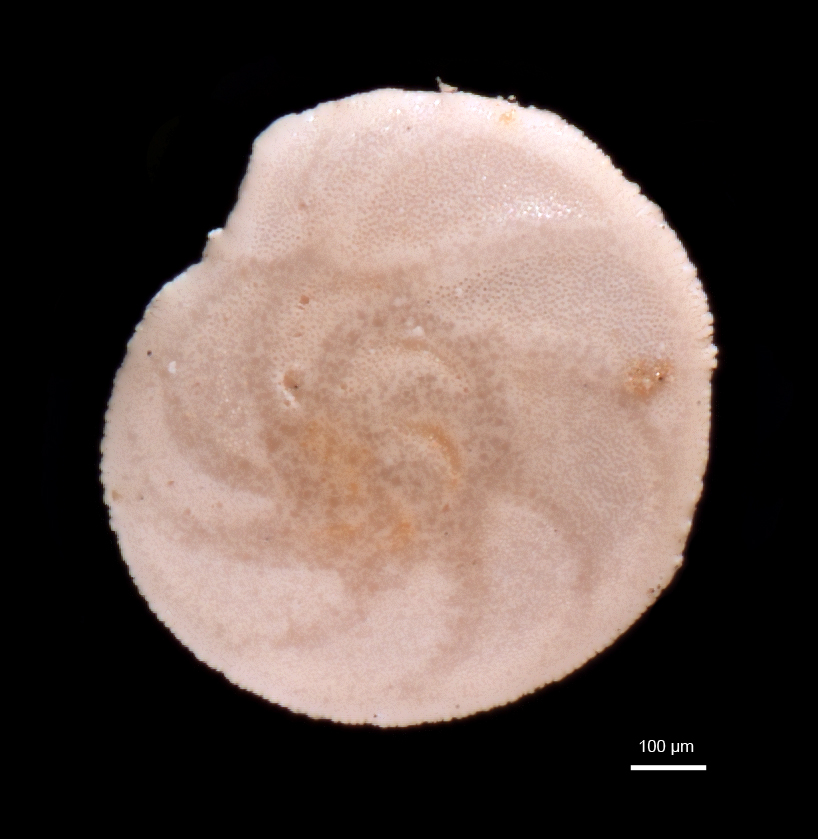Genus Rotalinoides
Rotalinoides Saidova, 1975
Description (translated from the Russian, Ellis and Messina Catalogue: Test biconvex. Septal sutures oblique and convex on the dorsal side. There is a canal passing to the inside of the chamber, located at the spiral end of the suture. Sutures radial on the ventral side. From the umbilicus up to the middle of the sutures are hollow and slightly coved by a plate outside. Under the peripheral edge of the plate there is a opening inside of the suture. Hollow suture opens into a spiral canal in the umbilical area and fors because the following chamber attaches diagonally to the previous chamber. Line of attachment extends onto the apertural surface of the previous chamber from the peripheral corner to the septal end of the aperture of the previous chamber and goes around this aperture. Umbilical end of each chamber opens into the spiral canal. Aperture interiomarginal, slit-like, located at an obtuse angle to the base of the apertural surface. Wall radial in microstructure and perforate. Monotypic.
Type species: Rotalinoides papillosa (Brady) – Rotalia papillosa Brady, 1884
Rotalinoides gaimardii (d’Orbigny, 1826)
Asterotalia gaimardii d’Orbigny, 1826
Ammonia papillosa Brady, 1884, p. 708, pl. 106, figs 9a-c; Cushman, 1915, p. 70, pl. 31, fig. 1.
Rotalia papillosa (Brady) Loeblich and Tappan, 1987
Distribution: R. gaimardii has been recorded from the San Juan Islands, and is very rare


